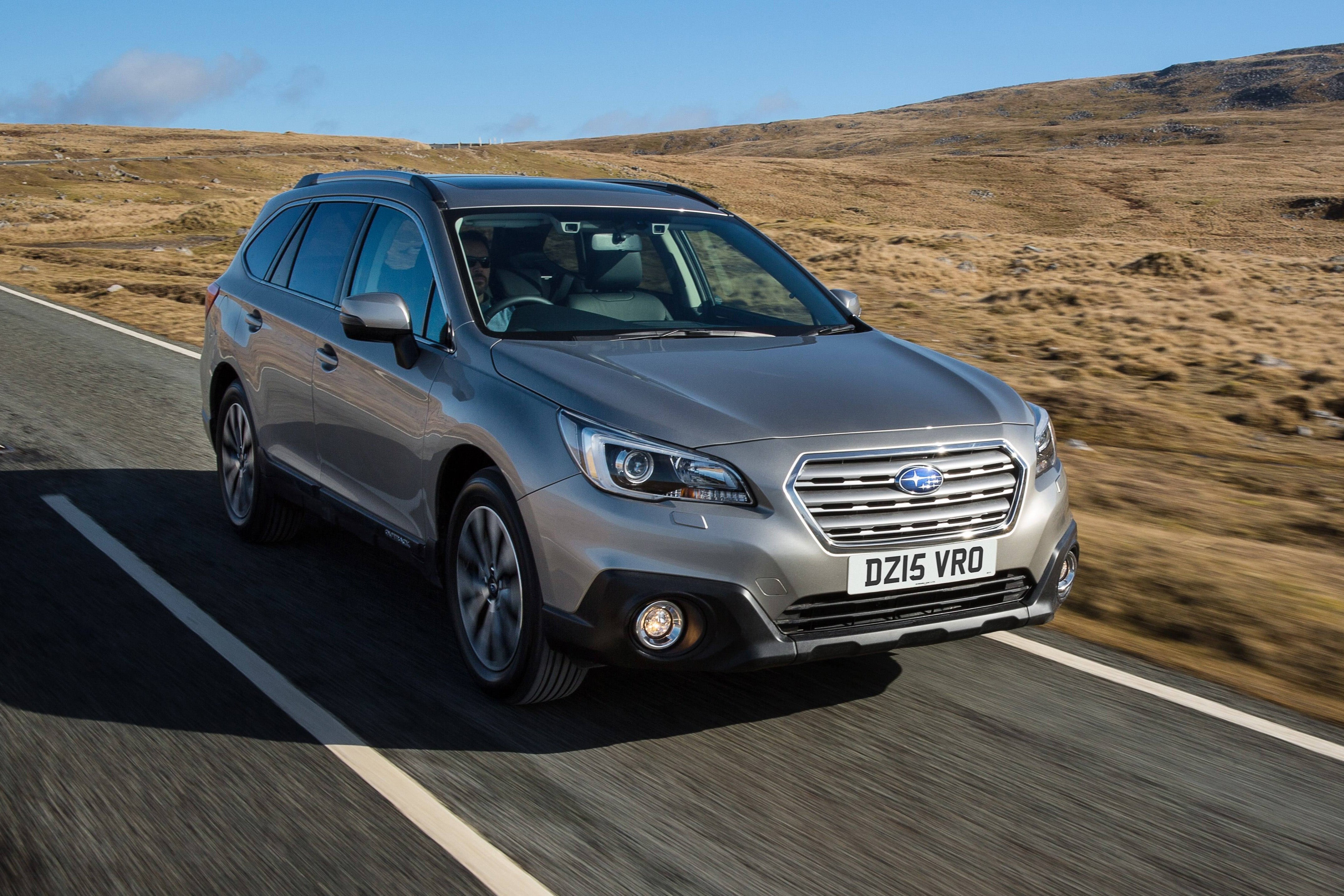Subaru Outback (2014-2021) Review
Written by Andrew Brady
Quick overview
Pros
- Brilliant in all weathers when the going gets tough
- High level of equipment as standard
- Spacious and practical interior
Cons
- High running costs, especially fuel economy
- Limited range of trim and engine options
- Cabin lacks premium feel of key rivals
Overall verdict on the Subaru Outback
"Our Subaru Outback review looks at the thinking person’s off-road vehicle. Don’t let its relative rarity fool you – the Outback is hugely popular in North America. It impresses with a generous level of kit, a spacious interior and supreme all-weather dependability."
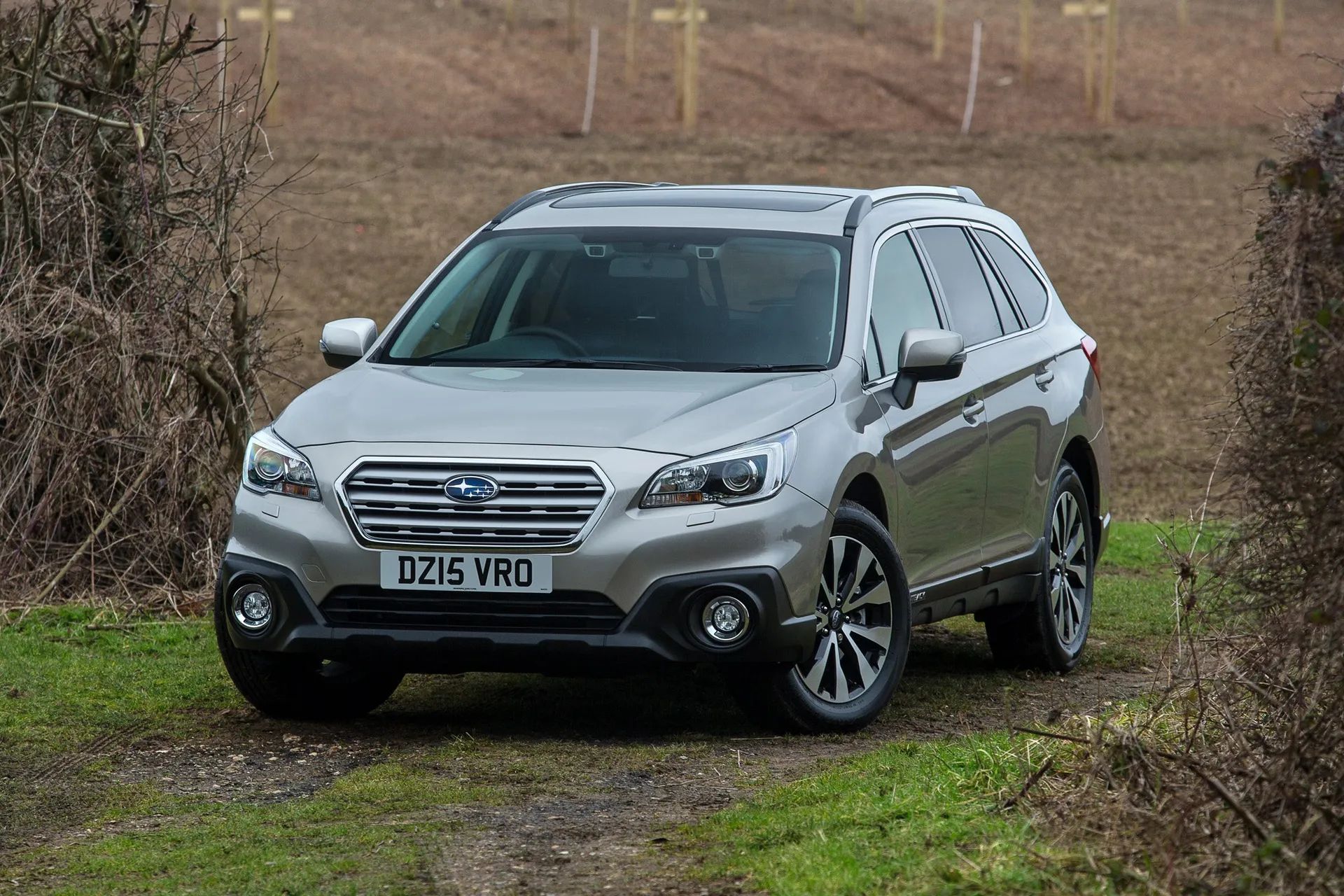
A ‘rugged estate’ sounds like a luxury retreat you might find in the middle of the Canadian wilderness. The kind of place you’d fly to in order to break free from the daily grind and drop off the grid, an escape in the middle of nowhere. The kind of place, in fact, that would need a fleet of off-road vehicles for airport transfers. A car like the Subaru Outback.
Subaru calls its off-road wagon a ‘rugged estate’ and the link to North America is far from coincidental. Although the Outback is a niche purchase in Europe, the all-wheel-drive station wagon is a big deal across the Atlantic. Around 181,000 found homes in the United States in 2019, making it Subaru’s biggest seller.
Over here, it appeals to a select group of people. Buying a Subaru Outback is a purchase driven by necessity and need. Head rules heart. Other off-road estate cars are available, but few offer such a compelling blend of reassurance, surefootedness, equipment and reliability.
Key to its appeal is Subaru’s excellent Symmetrical All-Wheel Drive system. The permanent all-wheel drive sends power to the wheels with the most traction, so you can corner with confidence. All weathers, all seasons and all road conditions – the Subaru Outback is unlikely to put a foot wrong.
In a world of efficient small turbocharged petrol engines and electrification, an all-wheel-drive estate car with a 2.5-litre petrol engine might seem a little outmoded. In many ways, this is part of the Outback’s appeal.
The cabin majors on functionality and robustness, but the current Outback has narrowed the gap to the premium players in this small but competitive segment. As a result, fit and finish is better than ever, while the Outback is packed with the kind of standard equipment that would be optional on rival cars.
It’s also incredibly spacious, with a cavernous boot that doesn’t come at the expense of cabin space. There’s a generous amount of headroom and legroom for four adults, or five at a push.
There’s more, because the Subaru Outback is one of the safest cars in its class, with a five-star Euro NCAP safety rating to its name and a clever ‘EyeSight’ suite of driver assistance systems. Put simply, EyeSight uses two cameras to monitor the road ahead, taking preventative measures if it detects a potential collision.
What’s the catch? Well, the cabin is unlikely to win any awards for flair or imagination, while the running costs will be expensive. A 2.5-litre petrol engine isn’t especially economical, while Subaru servicing and maintenance tends to be pricey.
However, thanks to a comprehensive warranty and Subaru’s reputation for reliability, the Outback represents a rather astute purchase. Buy one and you’ll join a small but fiercely loyal fanbase. Read on to discover what you’re missing out on.
Looking for a used car for sale? We've got 100s of Subaru Approved Used Cars for Sale for you to choose from, including a wide range of Subaru Outback models for sale.
Is the Subaru Outback right for you?
Do you live at the end of a gravel track? Does your commute to work involve a mountain pass, a muddy lane or babbling brook? Do you live in a region where weather conditions are best described as ‘changeable’? Is all-wheel drive a necessity rather than a fancy badge to impress your mates?
If the answer to at least one of these questions is ‘yes’, the Subaru Outback is right for you. Subaru’s permanent Symmetrical All-Wheel-Drive system is well proven, offering supreme all-weather traction and grip. It’s not the cheapest car to buy or run, but the Subaru Outback is likely to offer years of rugged dependability. Little wonder many Subaru owners keep coming back to the brand.
What’s the best Subaru Outback model/engine to choose?
While some manufacturers overload you with various trim levels, engines and options, Subaru has adopted a ‘set menu’ approach with the Outback. Aside from two trim levels and a small suite of colour options, it’s a case of ‘take it or leave it’.
Fortunately, the Subaru Outback comes preloaded with a generous level of equipment. Many of the features on even the entry-level version will be options on rival cars, so this needs to be taken into account when considering whether to buy one.
The 2.5-litre ‘Boxer’ petrol engine is a modern classic. It sounds fantastic, so you’ll feel like a rally hero on your daily commute. It also offers a smooth and linear delivery of power, albeit with a niggling sense that it’s woefully out of touch with the shift towards electrification and efficiency. The old diesel engine is worth considering if you’d like some economy to go with your traction.
What other cars are similar to the Subaru Outback?
Three cars immediately spring to mind: the Audi A4 Allroad, Volvo V60 Cross Country and Volkswagen Passat Alltrack. These cars share the same raised ride height, rugged styling and all-season dependability. We should also mention the Skoda Octavia Scout and discontinued Vauxhall Insignia Country Tourer.
However, we’d argue that the Subaru Outback is just as much a rival to the modern breed of SUVs. It might lack the raised driving position and image-friendly body style, but the Outback is nicer to drive, with a large boot and excellent off-road manners. SUV rivals with a Subaru badge include the Forester and Subaru XV.
Comfort and design: Subaru Outback interior
"There’s a refreshing simplicity to the interior layout – it all feels very Japanese. You won’t find a configurable digital dashboard, dozens of menus on the infotainment system or a technicolour dreamcoat of ambient lighting options."
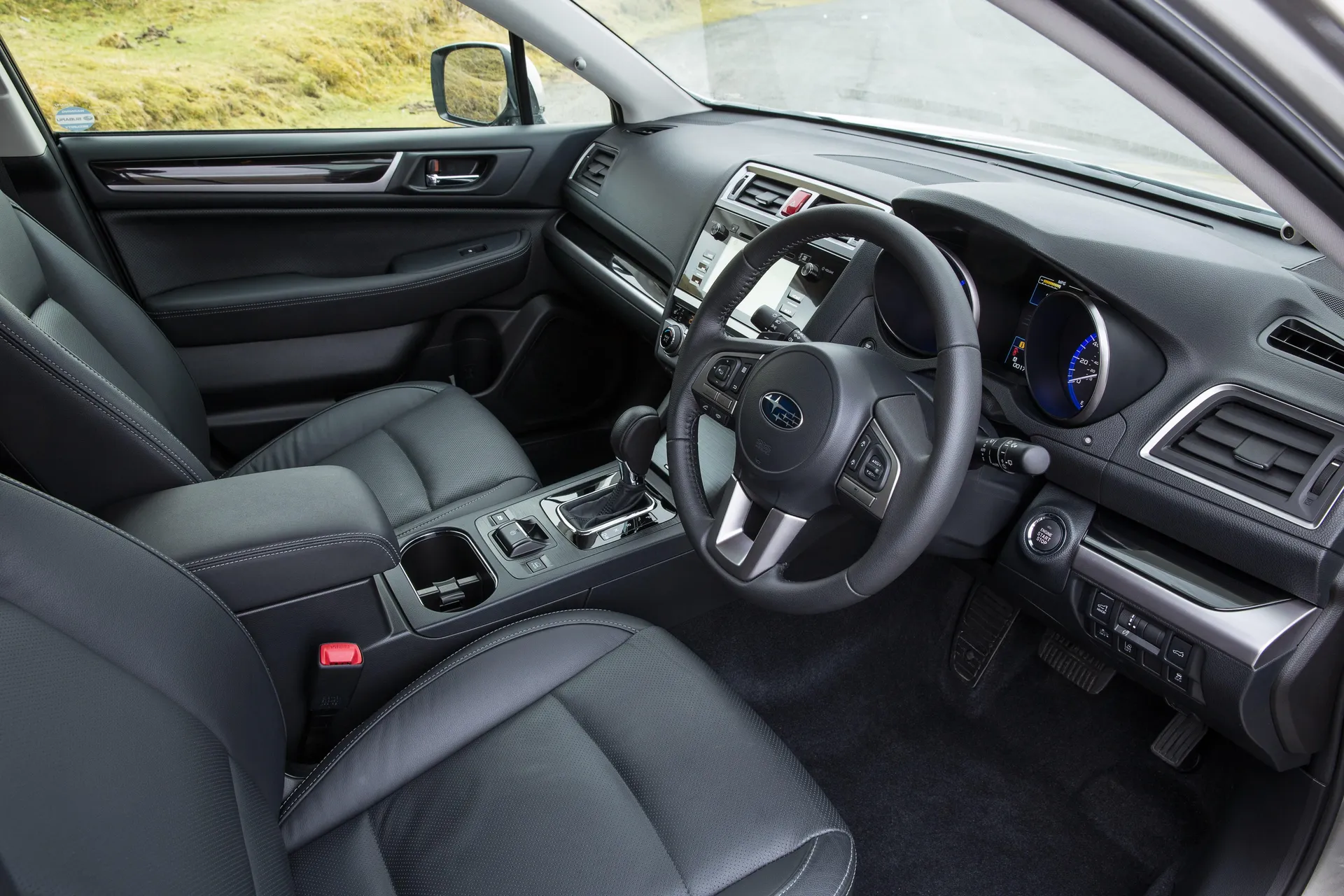
Instead, you get a pair of clear circular displays ahead of the driver, a central touchscreen and climate control buttons and dials that are easy to operate on the move. Because the design of the Subaru Outback cabin was never in fashion, it will never go out of date. Simple.
We’d recommend the post-facelift Outback, as Subaru introduced new decorative gloss black panels and silver surrounds to the dashboard. These small but significant changes help make the cabin look and feel a little more upmarket, with styling that’s easier on the eye.
Although the Outback lacks the commanding driving position of an SUV, the raised stance of the car provides a good view of the road ahead. The driving position is superb, while the seats are both comfortable and supportive. Eight-way electric adjustment for the driver’s seat is standard across the range.
Subaru has managed to get the basics right. The steering wheel, shift lever and pedals are perfectly aligned, while the controls and switches seem to be in the right position. As a result, the Outback is an easy car to drive, leaving you free to concentrate on dealing with the rough terrain.
Quality and finish
Subaru has always felt a generation behind its European rivals when it comes to fit and finish. This is partly because the Japanese favour robustness and simplicity over the use of exotic materials and needless glamour.
The Subaru Outback’s biggest issue is that it competes in a very image-conscious segment. There’s nothing inherently wrong with the finish of the Outback, it just lacks the perceived quality of the likes of Audi, Mercedes-Benz and Volvo.
Some of the plastics used in the cabin feel a little low-rent, but the materials used at eye level are soft and premium. All versions get a leather steering wheel, and while the SE features fabric seats, the SE Premium gets full leather.
Heated seats are standard on Subaru Outback SE and SE Premium, as is dual-zone climate control, a pair of USB ports for the rear seats, cruise control and stainless steel door sill covers.
Upgrading to Subaru Outback SE Premium adds 18-inch rather than 17-inch alloy wheels, a sunroof, leather seats, an electric adjustable passenger seat, an electric tailgate and an eight-inch touchscreen.
Is it worth the upgrade? Arguably not, because we think we could live without the features listed above. That said, leather seats add a touch of luxury to a relatively mundane cabin.
Infotainment: Touchscreen, USB, nav and stereo in the Subaru Outback
The Subaru Outback launched with a standard seven-inch touchscreen media system, incorporating satellite navigation, audio, smartphone connectivity and a rear-view camera.
In 2018, its size was increased to eight inches in the SE Premium model, with Apple CarPlay and Android Auto added to both trim levels. The system also includes a CD player, six speakers, DAB radio, voice recognition, steering wheel mounted controls, Bluetooth, two USB ports in the front, plus two USB ports in the back.
The eight-inch screen looks more impressive, but both displays are clear, uncluttered and easy to use. Unfortunately, the high-gloss finish makes them harder to see in direct sunlight, while the premium look suffers from dirty fingerprints.
The display itself is a little dated, but this is a less of a problem now that Subaru has added Apple CarPlay and Android Auto to the range. The smartphone displays look positively radiant on the glossy screen. Unfortunately, they also serve to highlight the limitations of the Subaru system, with the maps looking straight outta the 1990s.
A quick note about having four USB ports in the cabin. That’s a big deal for a car now – no more arguing over who gets to charge their smartphone on the move...
Space and practicality: Subaru Outback boot space
The Subaru Outback boasts a large 559-litre boot, but this can be increased to 1,848 litres with the rear seats folded down. This compares favourably to figures of 505 litres and 1,510 litres in the Audi A4 Allroad, or 529 litres and 1,441 litres in the Volvo V60 Cross Country.
The Volkswagen Passat Alltrack is more cavernous with the rear seats in use (639 litres), but can’t compete with the seats folded down (1,769 litres).
However, there’s more to the Outback than a large boot. Because it’s an estate and not an SUV, there’s a low loading lip at the back, which makes it easier for your dog to jump in. Top-spec versions get an electric tailgate, but it closes slowly, so make sure the dog doesn’t jump out again…
The boot opening is also tall, wide and square, which makes things easier when you’re loading big and bulky items. The rear seats don’t fold entirely flat, but they come very close. There are also levers in the boot to release the rear seats.
There’s some additional storage space under the boot floor, along with hooks in the boot if you need to tie anything down.
The rear doors open wide, which makes it easier to get in and out of the Outback. It also helps when you’re loading children into a car seat. Speaking of which, there are ISOFIX mounting points on the outer seats.
The Outback is 4870mm long, 2114mm wide (including mirrors) and 1675mm tall so there’s plenty of headroom and legroom in the back, but adults might find the space a little tight in the middle. There are no such problems in front, with the driver and passenger presented with a decent amount of room.
You’ll find four cupholders in the cabin – two in the front and two in the rear armrest – along with door pockets that are big enough for large bottles. There’s a good size storage bin between the front seats, plus a glovebox of generous proportions.
Overall, the Outback offers one of the best combinations of a large boot and decent amount of cabin space.
Handling and ride quality: What is the Subaru Outback like to drive?
"On the road, the Outback’s low centre of gravity gives it a significant advantage over SUV rivals. Although it’s not as rewarding to drive as the Audi A4 Allroad, or as plush and cosseting as the Volvo V60 Cross Country, the Outback inspires so much confidence, you won’t give a monkey’s biscuit."
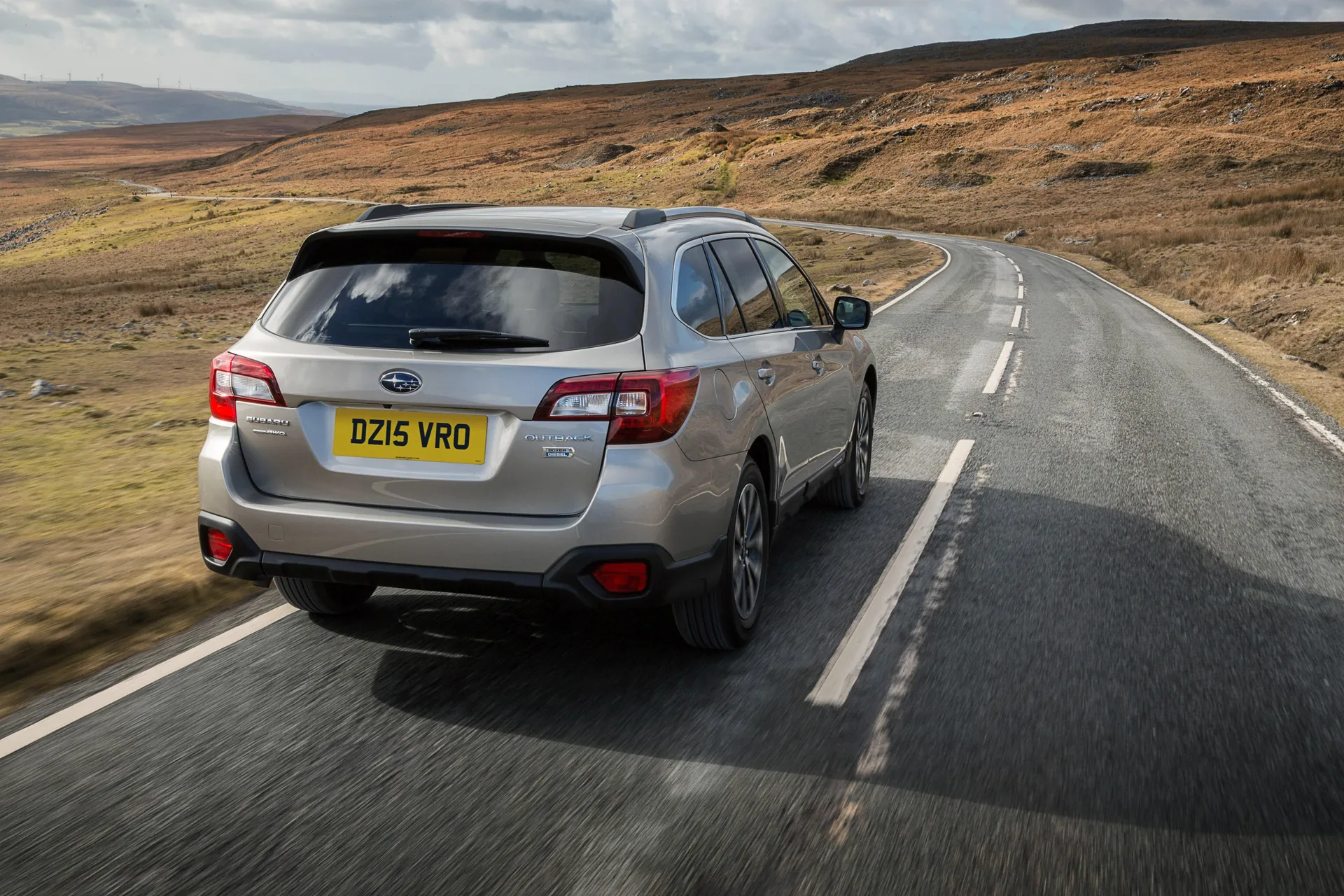
Thanks to the permanent Symmetrical All-Wheel Drive (SAWD) system, the Outback has a level of surefootedness that you won’t get in a softer small SUV. Because it’s ‘always on’, the system continuously sends power to the wheels with most traction, so you can make confident progress.
Unlike Outback models of old, the current car doesn’t turn to blancmange when you hit a bend, with little of the roll you might have experienced before. It feels tighter, stiffer and more hunkered down. Even the steering, while hardly dripping in feedback, is direct and positive. The keyword is ‘confidence’.
The ride quality is exceptional. It’s not cushion-soft, but the suspension soaks up all but the worst road imperfections without feeling ‘floaty’. There isn’t even a noticeable difference in ride quality on the 18-inch wheels.
Of course, the on-road ability of the Subaru Outback is just part of the story. This car is also supremely capable when the going gets tough. Thanks to 200mm of ground clearance and SAWD, the Outback tackles rocky ground, rutted tracks and wet grass without a problem. All versions come with X-Mode, which is like having a trained off-road driver by your side.
X-Mode takes control of the power and braking, leaving you to concentrate on steering. It’s perfect for when the going gets really tough. You also get hill descent control, which manages the throttle and brakes when you’re heading down a hill.
It’s named after a remote region of Australia, so it would be pretty embarrassing if the Subaru didn’t deliver on the rough stuff. Fortunately, it lives up to its name.
What engines and gearboxes are available in the Subaru Outback?
The Subaru Outback is powered by a superb 2.5-litre turbocharged ‘Boxer’ engine. It produces 175PS at 5,800rpm and 235Nm of torque at 4,000rpm, but it’s the way it goes about its business that really impresses. Power is delivered in a smooth fashion and accompanied by the evocative soundtrack of the flat-four engine.
It’ll hit 62mph in 10.2 seconds before going on to a top speed of 123mph. Only one transmission is available: a CVT automatic unit that Subaru calls ‘Lineartronic’. If your experience of CVTs leaves you with memories of frustration and lots of noise with no action, prepare to be impressed.
The Lineartronic transmissions work in harmony with the 2.5-litre engine to deliver a surprisingly rewarding driving experience. For the most part, the gearbox blends into the background, although you can create the feeling of a manual ’box by using the standard fit paddle shifters mounted on the steering wheel.
As we’ll explore in a moment, the 2.5-litre engine isn’t the most economical of engines, so you might want to consider the old 2.0-litre ‘Boxer’ diesel, which produces 150PS and 350Nm of torque.
Unfortunately, the diesel engine is noisy and seems less in tune with the CVT transmission. On the plus side, it could be paired with a six-speed manual gearbox, which wasn’t offered on the 2.5-litre petrol engine.
Refinement and noise levels
The smoothness of the 2.5-litre petrol engine and the relaxed nature of the Lineartronic transmission help to make the Subaru Outback feel as refined as any of its premium rivals. The overriding sense is that this is a grown-up and mature estate car.
There’s very little in the way of wind and road noise in the cabin, even at motorway speeds.
If you push the CVT transmission too hard, it can start to feel a little flustered, but adjusting your driving style is the key to keeping things in check. The old diesel engine can feel noisy at idle when pushed too hard, which also works against the overall feeling of refinement.
Safety equipment: How safe is the Subaru Outback?
Euro NCAP awarded the Subaru Outback a maximum five-star safety rating in 2014. The car scored 85 percent for adult occupant protection, 87 percent for child occupant protection, 70 percent for pedestrian safety and 73 percent for safety assist systems.
The company deserves great credit for developing its own in-house EyeSight driver assistance safety technology. This uses two cameras to monitor the road ahead and comprises six safety systems to provide audible warnings and even braking assistance to avoid or reduce the severity of collisions.
It includes pre-collision braking if you fail to notice a car stopping or slowing down, pre-collision throttle management if you accidentally select drive instead of reverse, adaptive cruise control, lane-sway-departure warning, lane-keep assist and lead vehicle start alert.
Lane-keep assist was added to the EyeSuite in 2018. It provides gentle steering control if the car is about to deviate from its lane at speeds of approximately 40mph or above. Steering-responsive headlights were also added to the Outback in 2018. It’s worth noting that EyeSight isn’t available on Subaru Outback models fitted with a manual gearbox.
The list of standard features is comprehensive and includes blind-spot monitoring, lane-change assist, rear cross-traffic alert, a reversing camera, front- and side-view monitor, multiple airbags, two ISOFIX points, high-beam assist, headlight washers and a tyre repair kit. There isn’t a spare wheel in the Outback.
MPG and fuel costs: What does a Subaru Outback cost to run?
"Fuel economy isn’t a Subaru Outback strong point. The current 2.5-litre petrol engine offers a claimed 33mpg on a combined cycle. In an era of electrification and small petrol engines offering excellent fuel efficiency, the Outback is found wanting."
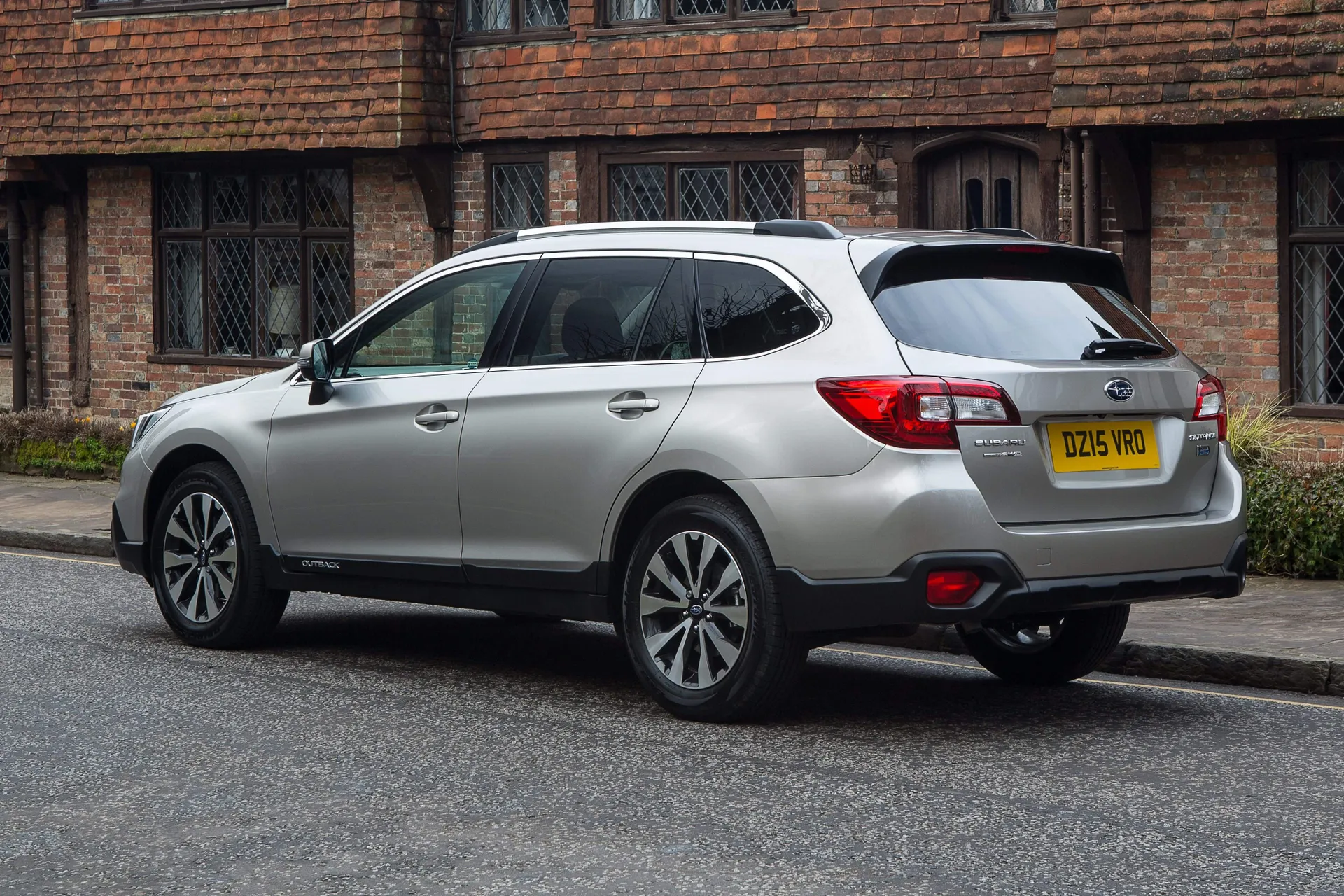
This means it’s unlikely to appeal to fleet buyers and anyone who pounds the motorways of Britain on a daily basis.
The old 2.0-litre ‘Boxer’ diesel engine offered a claimed 47.9mpg with a manual gearbox, or 44.8mpg when paired with the Lineartronic CVT. These are respectable figures, but it’s worth noting that they were recorded using the old (and less accurate) NEDC test procedure.
How reliable is the Subaru Outback?
Subaru has a great reputation for reliability and the Subaru Outback scored an average of 9.54 out of 10 for reliability in the latest HonestJohn.co.uk Satisfaction Index. Overall, Subaru ranked 7th out of 30 manufacturers.
Insurance groups and costs
Thanks to the Eyesight technology and a long list of active and passive safety features, the Subaru Outback is surprisingly affordable to insure. The cheapest is the 2.5-litre petrol in SE trim, which slots into group 17 (out of 50).
The 2.0-litre diesel in SE Premium receives a group 23 rating, so is likely to be the most expensive to insure. Other models fall between the two.
For some context, the Audi A4 Allroad has a group rating of 27 to 44, the Volvo V60 Cross Country is 31 to 35, and the Volkswagen Passat is 19 to 25.
VED car tax: What is the annual road tax on a Subaru Outback?
Buy a new Subaru Outback after 1 April 2020 and a ‘showroom tax’ of £1,305 will be included in the purchase price. The rate of Vehicle Excise Duty (VED) drops to £150 from year two.
For an Outback registered on or after 1 April 2017, but on or before 31 March 2020, you’ll pay £150 a year. That’s because the ‘showroom tax’ was paid for when the car was sold new.
There are different rates of VED for Outbacks registered from the car's launch in 2015 until 31 March 2017. The cost for a diesel version is £165 a year, while the petrol engines will cost £205.
How much should you be paying for a used Subaru Outback?
"The current Subaru Outback went on sale in the UK in April 2015. You’ll need at least £12,000 to secure an early Outback 2.0-litre diesel in SE spec, with between 70,000 and 80,000 miles on the clock."
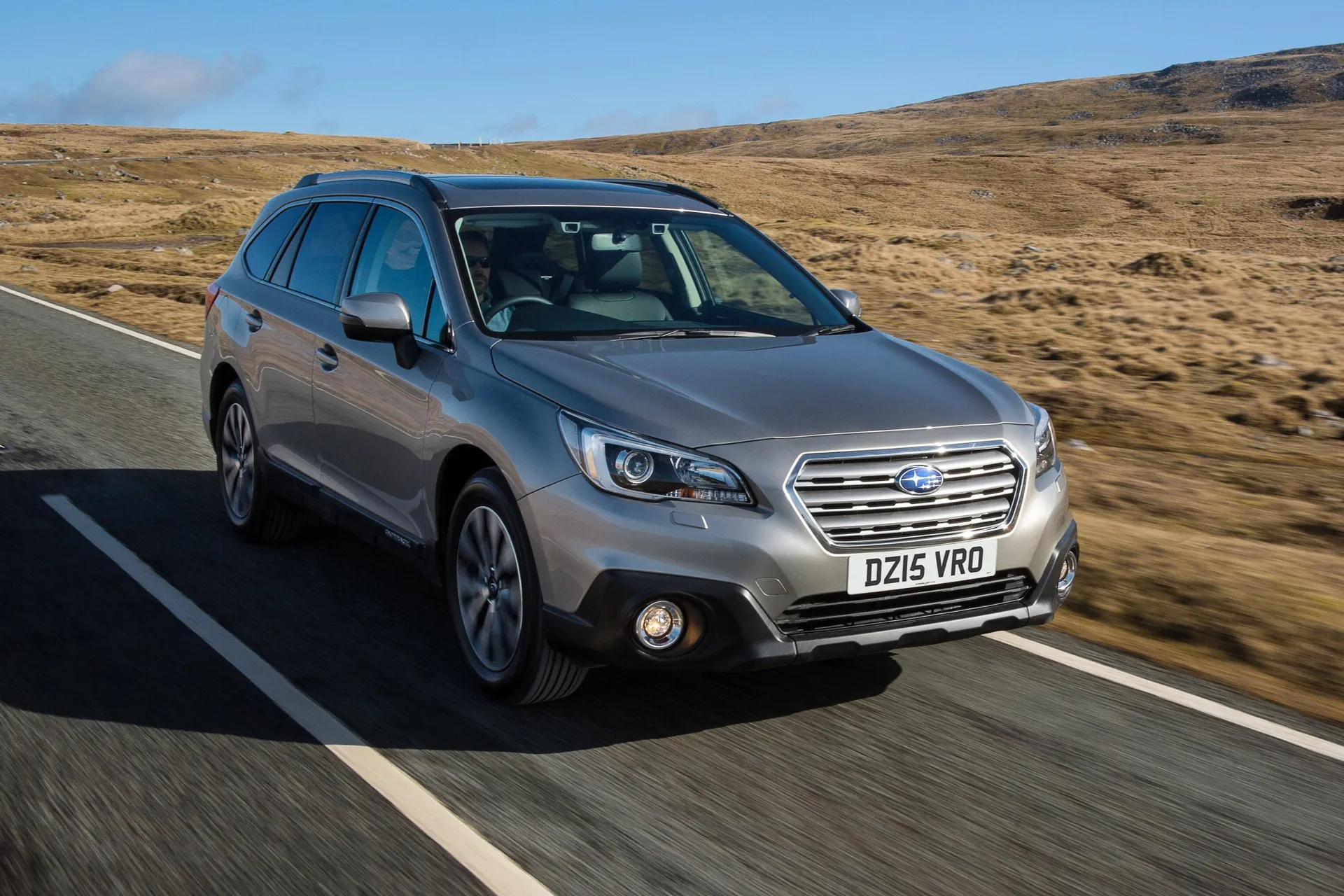
For a facelift model, introduced three years later, bank on spending at least £22,000. You’ll find pre- and post-facelift 2018 cars for around the same price – it’s definitely worth opting for the newer and improved version.
Your biggest challenge will be finding an Outback. It’s not a big seller in the UK, so you may need to travel to find the right one for you. Make sure you have a Subaru dealer near you for servicing and maintenance.
Trim levels and standard equipment
The Subaru Outback is packed with a generous level of standard equipment. The Subaru Outback SE model boasts 17-inch alloy wheels, LED headlights, automatic headlight and wipers, electric adjustable driver’s seat, heated front seats, keyless entry and start, dual-zone climate control, windscreen wiper de-icer, Apple CarPlay, Android Auto, four USB ports, paddle shifters, cruise control, X-Mode off-road assistance and EyeSight.
Upgrading to the Subaru Outback SE Premium adds 18-inch alloy wheels, leather seats, electric adjustable passenger seat, electric tailgate and the larger eight-inch touchscreen. There are six colours available on both models, with Oak Brown Pearl also available on the SE Premium.
There’s a £3000 price difference between the two trim levels. We’re not sure the SE Premium is worth the additional expense, although the 18-inch alloys look more upmarket. We’d also concede that the Oak Brown Pearl suits the Outback nicely.
Ask the heycar experts: common questions
Is the Subaru Outback a reliable car?
Which is bigger the Subaru Forester or Outback?
Is it worth buying a Subaru Outback?
Get our latest advice, news and offers
Keep me updated by email with the latest advice, news and offers from heycar.
By submitting you agree to our privacy policy
